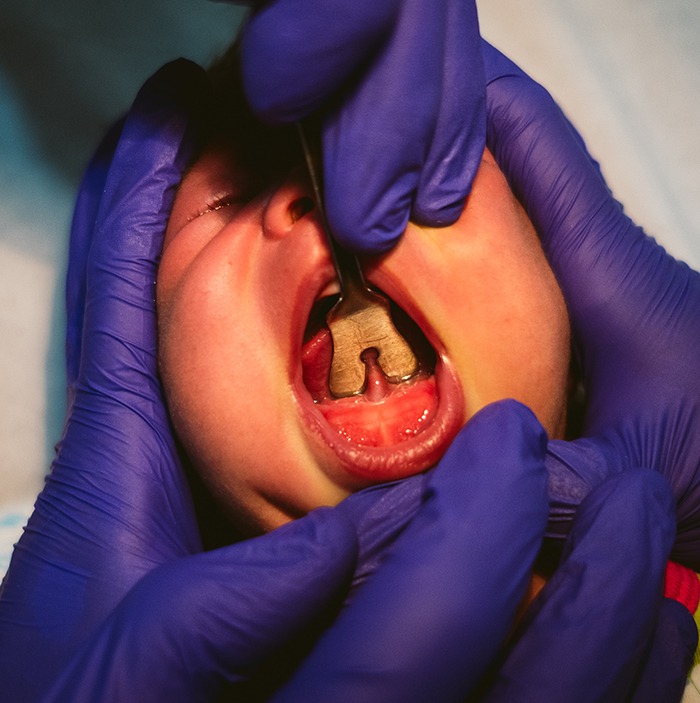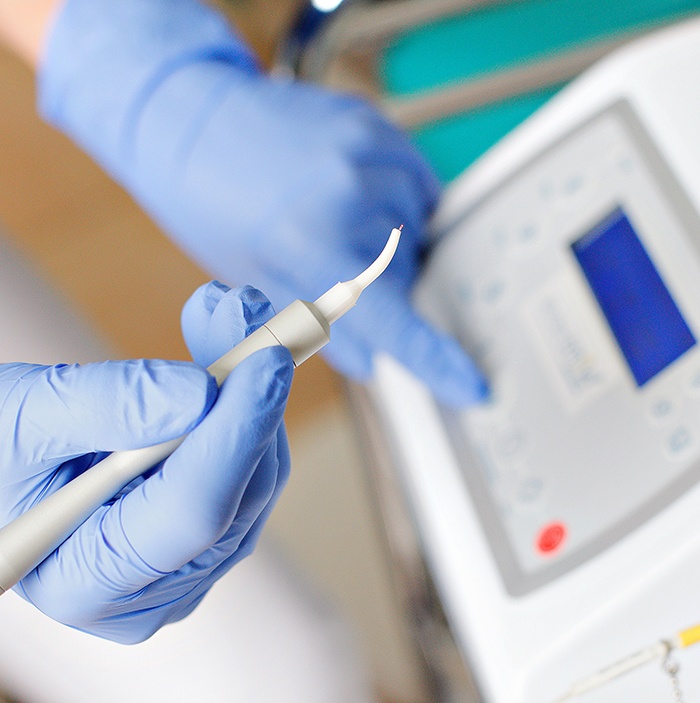Lip & Tongue Tie Treatment – Scottsdale
Quick, Comfortable Laser Frenectomies

Have you noticed that your baby has difficulty latching on when feeding, or does your toddler struggle to speak clearly? This could be a result of lip or tongue-tie. This occurs when there is an overdeveloped band of tissue in the mouth that restricts the movement of the lips or tongue. Fortunately, at Shea Dental of Scottsdale, we offer laser frenectomies to give your child greater oral mobility. Give us a call to schedule a visit!
Why Choose Shea Dental of Scottsdale for Lip & Tongue-Tie Treatment?
- We Use a Soft-Tissue Laser
- Quick, Non-Invasive Procedure
- Flexible Financing Options
How Do Lip & Tongue Ties Develop?

Lip and tongue ties result from thick, malformed tissues in the mouth. Lip ties are when the tissue that connects the lips to the gums is too short or thick, preventing free movement of the lips. If this is the case for an infant, breastfeeding can be made very challenging. Tongue ties result from a lingual frenulum, the tissue that connects the tongue to the floor of the mouth, that is too short, thick, or malformed. Here are some signs that your child may have a lip or tongue tie:
- Difficulty latching while breastfeeding
- Digestive issues, like colic or reflux
- Being unable to hold onto a pacifier in the mouth
- Prolonged nursing sessions
Why Is It Important to Treat Lip & Tongue Ties?

When left untreated, lip and tongue ties can lead to different developmental issues for children. Here are some of the most common ones:
- Speech delays and difficulty speaking
- Digestive problems, like acid reflux
- Breathing difficulties and airway issues
- Forward head and neck posture
- Teeth grinding (bruxism)
Lip & Tongue Tie Treatment

The most common way to address lip tie or tongue tie is with a quick and simple procedure called a “frenectomy.” This treatment is designed to be quick and comfortable. We use a soft-tissue laser to remove excess tissue. Using a laser like this is ideal for a more comfortable procedure, reduces the risk of infection, and promotes a faster recovery time.
Lip & Tongue Tie Treatment FAQs
How Should I Prepare My Baby for a Frenectomy?
Infants will not realize what is happening or have any clear memories of their frenectomy, so very little preparation is required. However, we still recommend that you take steps to keep both yourself and your child in a relaxed state of mind. It would also be good to feed your baby about 60 – 90 minutes before their surgery so they will be a little hungry and ready to nurse after the procedure has been completed.
During the day or two leading up to the frenectomy, we might recommend that you do a few exercises with your baby to help them practice using their tongue. For example, you might allow them to suck on your clean finger. Gently pull away, forcing them to exert more effort to hold onto it. Gently rubbing a finger along their lower gums might also help train their tongue for lateral motion after their frenectomy is over.
Does a Frenectomy Hurt?
Our team uses a laser to perform frenectomies, which means that the procedure causes little to no discomfort. In fact, in some cases, we do not even use local anesthetic. The laser cauterizes the targeted tissue, so there should be very little bleeding.
Your baby may be fussy and sore for a few days after the procedure. However, you can expect them to heal quickly.
Is My Child Old Enough to Get Lip or Tongue Tie Treatment?
There is essentially no minimum age for a frenectomy. In fact, it can be performed as soon as a few days after birth! The earlier your child receives treatment, the better. Allowing them to have free movement of their oral structures from very early in life can prevent complications down the road. Plus, it is important to keep in mind that lip and tongue ties do not go away on their own, so there is no real reason to postpone treatment.
What Should I Do After My Child’s Lip or Tongue Tie Has Been Treated?
After a frenectomy, there is a small chance that the modified tissue could reconnect. To prevent that from happening, you may need to do some simple exercises and stretches with your child. Our team will demonstrate what you need to do. For example, you may need to gently swipe your finger under their lip or tongue or gently raise their lip or tongue upward.
If you have any questions or concerns after your child’s procedure, do not hesitate to reach out to us.
 (480) 998-3923
(480) 998-3923